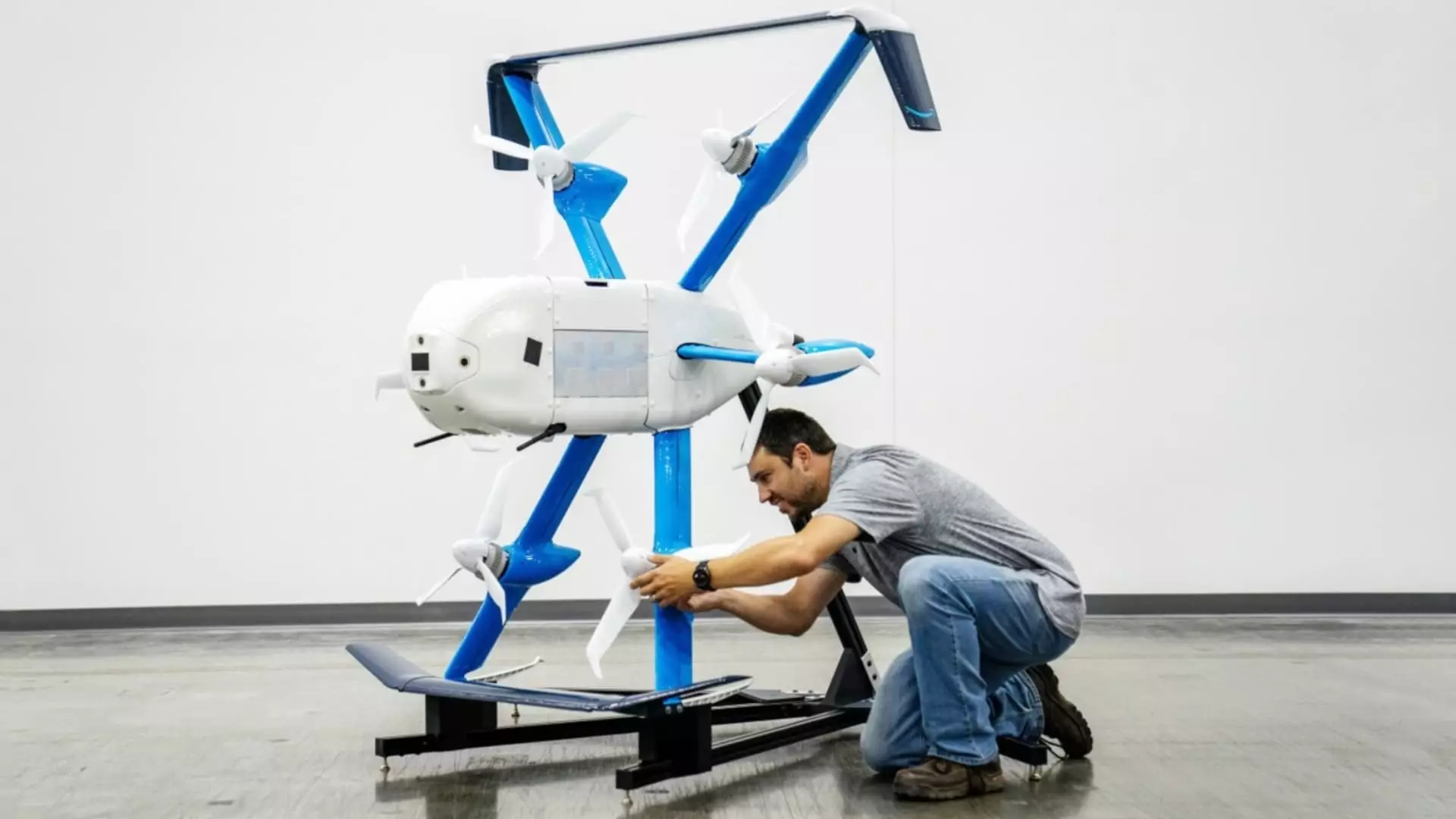In a notable move that reflects both resilience and commitment to innovation, Amazon has officially relaunched its Prime Air drone delivery service in Texas and Arizona after a prolonged hiatus. The service was temporarily suspended due to anomalies in the drone’s altitude sensors—a critical aspect of flight safety. These complications were not indicative of immediate danger, according to Amazon, but rather a precautionary measure taken to prevent any potential risks posed by inaccurate sensor data exacerbated by environmental dust.
Such preemptive action highlights Amazon’s dedication to safety standards, even in the rapidly evolving landscape of drone technology. While these measures might seem mundane, they underscore an essential priority: ensuring that technological advancement does not come at the cost of consumer safety.
Addressing Technical Challenges Head-On
Amazon’s candid acknowledgment of the altitude sensor issue reveals a maturity in corporate governance that is often absent in the tech sector. By pausing its operations to implement a software update and consult with the Federal Aviation Administration (FAA), Amazon has demonstrated a commitment to quality assurance rather than rushing to market.
The software update, crucial for rectifying the altitude inaccuracies, took center stage in the company’s operations. An Amazon spokesperson indicated the update received the green light from the FAA, allowing the company to cautiously resume deliveries. This not only provides a layer of assurance to consumers but also reinforces the idea that safety is integral to Prime Air’s evolving infrastructure.
Demand Surge and Operational Ambitions
After restarting, Amazon claims to have encountered “unprecedented levels of demand.” It is a testament to the public’s enthusiasm for faster, more efficient delivery services—a market ripe for disruption. David Carbon, an executive overseeing the drone program, bragged about a speedy 31-minute delivery of a bottle of sleep aid, showcasing the potential time efficiency that drones can offer. However, it begs to be asked: how far did this drone really travel, and what are the practical limitations within this scenario?
Despite progress, the capacity for such deliveries remains teetering on a carefully crafted balance between efficiency and operational limitations. The company’s long-term goal to deliver 500 million packages annually by the end of the decade casts a wide net of ambition but raises concerns regarding scalability and reliability.
Past Mishaps: Learning from Experience
The path to drone delivery has not been entirely flawless. The company faced setbacks, including two separate crash incidents during test flights, underscoring the inherent risks associated with aerial delivery systems. Each incident serves as a stark reminder of the precarious dance between innovation and safety. Although Amazon insisted these mishaps were not linked to the altitude sensor issue, they remain an important part of the narrative.
With advancements like the MK30 drone, designed to be quieter and more resilient against weather variations, Amazon is attempting to solve earlier complaints from residents about noise pollution. Yet, the relocation of the drone hub from populated areas shows an understanding of community concerns that extend beyond mere technical solutions.
Global Expansion and Future Prospects
With aspirations to expand internationally to regions like the U.K., Amazon is clearly eyeing a broader market. This ambition, coupled with critical regulatory developments, suggests the company is serious about scaling its drone delivery operations. Welcoming influential figures from transport departments reflects an active engagement with regulatory bodies, essential for sustaining long-term growth in an industry fraught with scrutiny.
The MK30 drone represents a new chapter in Amazon’s courier technology, but it is crucial for the company to recognize the societal implications surrounding such innovation. They must assure the public of their commitment to being a good neighbor while striving for efficiency and technological prowess.
As Amazon forges ahead in its mission to redefine last-mile delivery, the balance between groundbreaking technology and responsible practices will dictate not only its success but also its reputation among consumers and regulators alike. The road ahead is undoubtedly challenging, but the promise of effortless deliveries hovering just overhead is one worth striving for.

